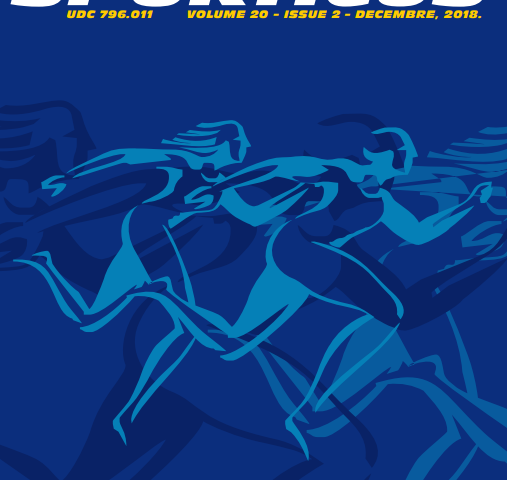Abstract
The sample of ten young healthy subjects, male, age 20, 21 (students of the Faculty of Sports, University of Banja Luka, Bosnia and Herzegovina ), were examined for the effect of dynamic and static stretching on exercise of force and power of quadriceps and hamstring muscle of the dominant leg knee joint. Using the isokinetic dynamometer, both muscle groups were diagnosed with variables: maximum torque (force), relative torque, explosive force and relative power. Measurements were carried out under conditions of slow (60°/s) and fast speed (240°/s) contractions. The same measurement protocols were implemented in three experimental situations: without the initial stretching (WS), after the dynamic stretching (D) and after the static stretching (S). Results of statistical analysis show that both types of expansion lead to an increase of force and power of hamstring and quadriceps (quadriceps 60°/s: WS – 2,67 Nm/kg, D – 3,06 Nm/kg , S -3,05 Nm/kg; hamstring 60°/s: WS -2,25 Nm/kg , D -2,41 Nm/kg , S- 2,41 Nm/kg; quadriceps 240°/s: WS- 1,42 Nm/kg , D- 1,70 Nm/kg , S- 1,64 Nm/kg; hamstring 240°/s: WS -1,51 Nm/kg , D- 1, 85 Nm/kg , S – 1, 71 Nm/kg). Looking at the results, both group of muscle (quadriceps and hamstring) produced greater explosive force at a speed of 60°/s after the static stretching. (Quadriceps: WS- 158,99 Nm, D- 188,13 Nm, S- 188,72 Nm; hamstring: WS- 149,53 Nm, D-156,67 Nm, S-164,00 Nm). Both group of muscle produced greater explosive force at the speed of 240°/s after the dynamic stretching (quadriceps: WS-106,75 Nm ,D- 131, 50 Nm, S- 126,30 Nm; hamstring : WS- 114,41 Nm, D-139,02 Nm, S-129,43 Nm). This indicates that static and dynamic stretching have positive acute effects when applied before the activities in which the rate of contraction is small and external resistance is large, while only dynamic stretching has a positive effect when it precedes the activities of higher muscle contraction speed. Regardless of the elongation model applied, quadriceps is the dominant muscle group during the slow contractions (60°/s), while at high speeds, the role of hamstring significantly increases.


